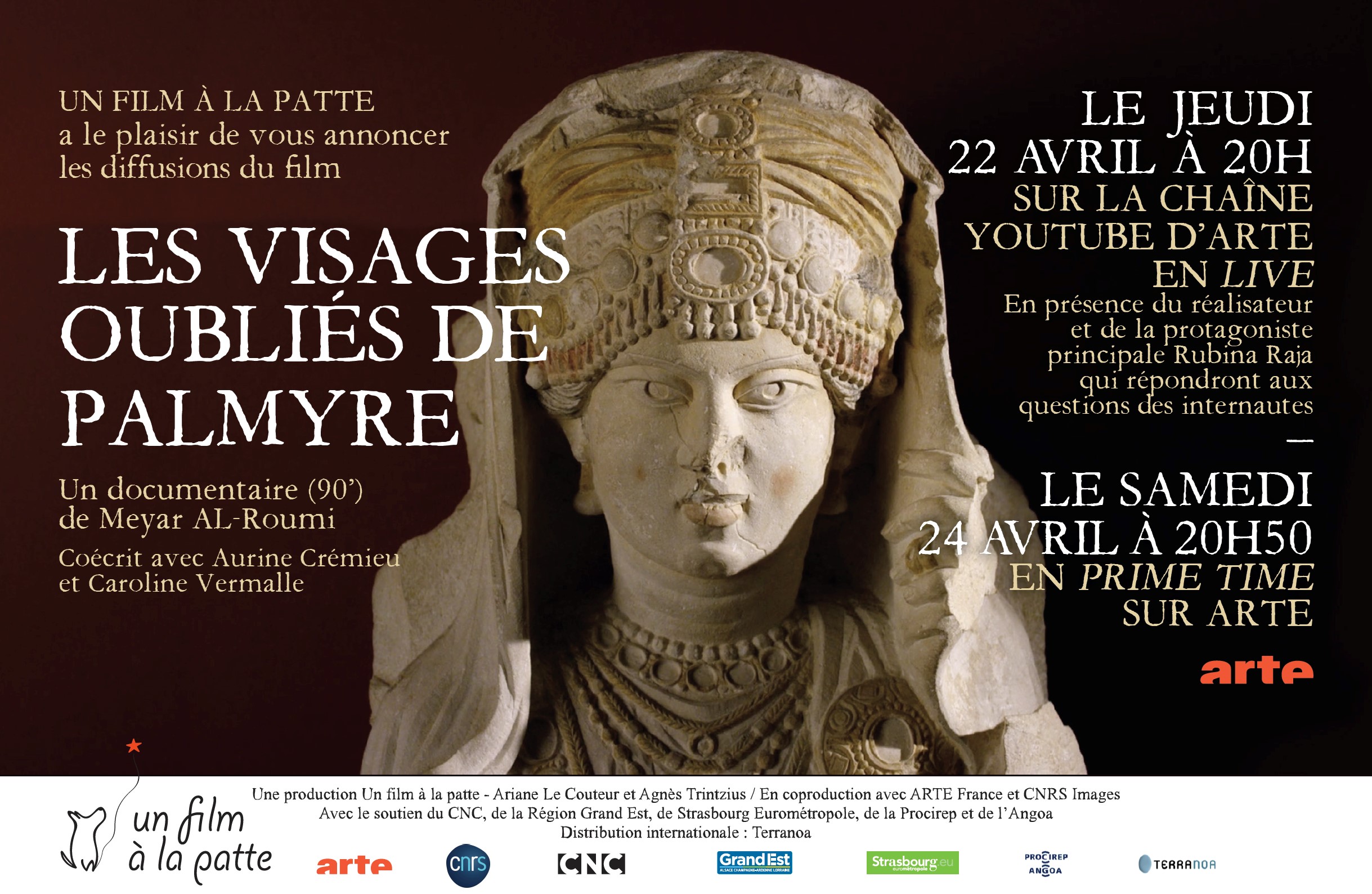Premiere of the documentary 'Les visages oubliés de Palmyre'
24 April 2021, the French documentary 'Les visages oubliés de Palmyre' will premiere on television. The film is about the oasis city of Palmyra and takes as one of its points of departure the research conducted in the Palmyra Portrait Project.

Palmyra has fascinated the western world ever since the European rediscovery of the city in the 17th century. Situated by the Efqa spring in the heart of the Syrian Desert, Palmyra became an important centre for caravan trade in the Roman period, a nodal point between West and East. The heyday of Palmyra was in the first three centuries BC, and several thousands of Palmyrene funerary portraits have survived from this period. Since 2012, the Palmyra Portrait Project, directed by Rubina Raja and funded by the Carlsberg Foundation, has researched and collected data about these portraits.
The new documentary Les visages oubliés de Palmyre covers Palmyra’s long urban history – all the way up to the destructions by ISIS in 2015 and 2016 during the Syrian civil war. The visually impressive film follows the Palmyra Portrait Project’s work and challenges documenting the funerary portraiture both before and after the destructions of Palmyra. The documentary, which is directed by Meyar AL-Roumi and produced by Un film á la patte and ARTE France, underlines the great potential of studying Palmyra through the remaining limestone portraits of its former inhabitants.
Searching for Palmyrene funerary portraits around the world
The film follows Rubina Raja and the Palmyra Portrait Project around the world, as they search for funerary portraits. From the collection at Ny Carlsberg Glyptotek in Copenhagen (the largest collection of Palmyrene funerary portraits outside Syria) to the collection in the Musei Vaticani in Rome. And from the Getty Villa in Los Angeles, where an exhibition of Palmyrene funerary sculpture was featured in 2018, to the collection of the famous French sculptor Auguste Rodin in Paris.
As the protagonist of Les visages oubliés de Palmyre, Rubina Raja unfolds and explores the fascinating history of Palmyra through her research conducted in the Palmyra Portrait Project. This is done together with several internationally acclaimed experts on Palmyra – of which many have collaborated closely with the project.
In the documentary, archive material is also featured as playing an important role in the general study of Palmyra. This is especially true for the Ingholt Archive at Ny Carlsberg Glyptotek, which the Palmyra Portrait Project has used for their research and digitised. Harald Ingholt was a Danish archaeologist excavating in Palmyra in the 1920s and 1930s, and the archival material has been of great value for the research and detective work conducted by the project.
Les visages oubliés de Palmyre premieres on the TV channel ARTE on 24 April, 20:50. Thursday 22 April, 20:00, a live interview will be streamed on the YouTube channel of ARTE. The interview will feature Rubina Raja and the director Meyar AL-Roumi.
The Palmyra Portrait Project
The funerary portraits from Palmyra, which showcase both Roman and local traditions, give a fascinating insight in the way Palmyrenes viewed themselves as well as their city. The corpus collected by the Palmyra Portrait Project currently holds about 4000 portraits and will be published in 2022.
The Palmyra Portrait Project has overall changed our knowledge about innovation and tradition – both in Palmyra and in Antiquity in general. It has contributed to new knowledge about production economy, social status, gender balance in society, and demography. The Palmyra Portrait Project has underlined the importance and relevance of basic research within the humanities – and how important it is to fund such research.
The team behind the Palmyra Portrait Project has consisted of several Danish and international postdocs and PhD students as well as research assistants and student assistants. Furthermore, a group of dedicated international experts have acted as advisers and co-authored several of the project’s publications.
